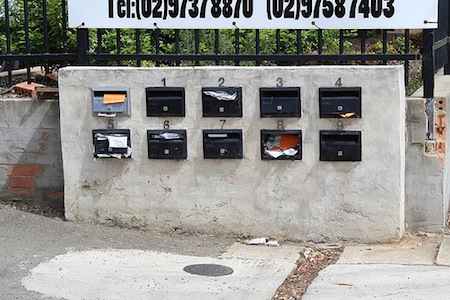 The accepted email marketing industry wisdom is that sending too many emails is a bad practice that will alienate prospects and customers. However, this view is being challenged by some out-of-the box thinkers who believe sending more emails is a better strategy.
The accepted email marketing industry wisdom is that sending too many emails is a bad practice that will alienate prospects and customers. However, this view is being challenged by some out-of-the box thinkers who believe sending more emails is a better strategy.
Among them is Dela Quist, CEO of Alchemy Worx, who argues that the great unspoken truth of email marketing is that sending more emails generates more money. But, he says, “email marketers fail to fully exploit this fact because they are afraid of being seen as spammers-a misconception for which we have only ourselves to blame.”
The idea that your subscribers will be alienated by receiving too many emails is a false premise, says Quist, pointing out that research studies confirm email is the number one way consumers prefer to be contacted by the companies. Email is unobtrusive, puts the subscriber in control and is easy to process, says Quist, adding that “all the people on your list have specifically given you their permission to send them stuff, and they can switch off that supply any time they like at the touch of a button.”
Quist points out that a high frequency of messaging is the norm in other mediums like TV and radio. “Listen to a radio show with a dozen messages per hour from the same sponsor, and you’ll realize this frequency goes very high indeed,” he points out. “Can you imagine any other industry-TV, Radio, Press, Search, Banner or even Billboards-suggesting that the way to stand out from the competition is by doing less?”
If TV advertising were free, Quist argues, nobody would recommend that brands show fewer advertisements, so why do we do this with email? “The belief in sending fewer emails, but making them more targeted, misses out on the key benefits of email as both an engagement channel and a brand recognition tool.”
Email marketers have been conditioned to fear over-mailing, which is the single biggest obstacle facing our industry today, says Quist, adding that, “We are, quite simply, our own worst enemy.” In advocating sending more emails, Quist urges marketers to stop adhering too doggedly and narrowly to ingrained beliefs and practices.
“Brands must stop making the right message to the right person at the right time a goal in its own right and use segmentation and targeting as a means to sending more email, thinking of email as a broadcast channel for brand marketing.”
If at First You Don’t Succeed, Send It Again
Another advocate of sending more emails, but in the form of resending, is eWay Direct CEO Neil Rosen. As he explains, when an email has been sent and recipients have not responded, the tendency is to discard the sent email and create an entirely new one. But this can be a mistake, says Rosen, because there are many reasons why a subscriber may not have opened or clicked on an email.
“Emails get lost, emails get ignored, emails get mislaid,” explains Rosen. A customer may have been busy when the email came in, the subject line may not have been appealing at that particular moment or the customer might have simply have discarded it without paying much attention.
Resending the original email using a different subject line but the same creative can yield dramatic results, boosting your open rate by as much as 50 percent, says Rosen. In fact, he says, resending will give you the best bang for your marketing buck, adding that “resending is an easy, low-cost way to remind subscribers of your great offer-and for you to gain additional revenue.”
Before you can send more emails, you must ensure your current emails are being delivered. Download “Email Deliverability: 21 Steps to Success” for best practices on reaching your subscribers.
Photo Credit: Kel O’Shea
 Affiliate Marketing
Affiliate Marketing Automotive
Automotive eCommerce and Retail
eCommerce and Retail FinTech
FinTech LeadGen
LeadGen Nonprofit and Political
Nonprofit and Political Payments
Payments Technology Platforms
Technology Platforms Tourism and Hospitality
Tourism and Hospitality
 The accepted email marketing industry wisdom is that sending too many emails is a bad practice that will alienate prospects and customers. However, this view is being challenged by some out-of-the box thinkers who believe sending more emails is a better strategy.
The accepted email marketing industry wisdom is that sending too many emails is a bad practice that will alienate prospects and customers. However, this view is being challenged by some out-of-the box thinkers who believe sending more emails is a better strategy.